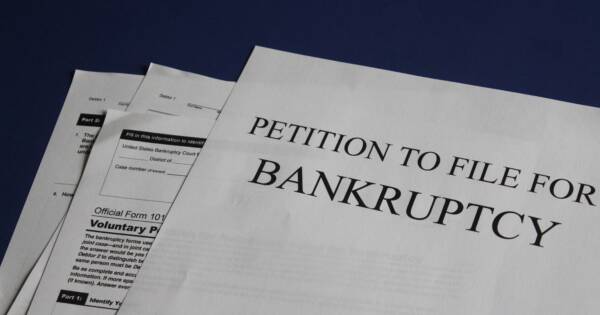While estimating and filing your personal taxes for the year may seem overwhelming, the process is actually quite straightforward using the IRS 1040-ES form.
Estimating your personal taxes allows you to be financially prepared for the year ahead of you. In this overview, we provide a simple breakdown of how you can estimate your personal taxes for the year.
An Overview on Personal Taxes
In the United States, personal taxes must be paid on income earned. Income is taxed on a federal level. Many state and local governments also apply an income tax, although there are a few exceptions, such as Washington and Texas. The federal government’s tax system is progressive, meaning the tax rate increases as an individual’s income increases. Currently, marginal tax rates range from 10 to 37%.
The sum of the taxes being taken directly from your income earnings is known as withholdings. Many employers process withholdings for their employees. However, if a person earns income through a position that isn’t subject to withholdings, they’ll still need to pay the taxes on the amount they’ve made using the estimated tax process. Typical income streams that aren’t subject to withholdings include self-employment, rent, interest, capital gains, awards and prizes, and dividends. Estimated tax is used for income tax and for other taxes, such as alternative minimum tax and self-employment tax.
Who Must Pay Personal Taxes
In the United States, the following individuals are subject to personal taxes:
- U.S. citizens and resident aliens
- Residents of the U.S. Virgin Islands, Puerto Rico, Guam, the Commonwealth of the Northern Mariana Islands and American Samoa
- Nonresident aliens
You may be exempt from paying personal taxes for the current year if you meet all three of the following criteria:
- You have no tax liability for the prior year.
- You weren’t a U.S. citizen or resident for the whole year.
- Your prior tax year covered a 12-month period.
 Jeremy Dorrough/Unsplash
Jeremy Dorrough/UnsplashHow to Figure Out Personal Taxes
You can use the 2020 1040-ES printable form to figure out your estimated taxes for the year. This form is provided by the Internal Revenue Service (IRS) as an official resource for individuals to estimate and claim their personal taxes for the year. This process is called making “estimated tax payments” because you’re estimating how much tax you’ll owe to the government.
You will need to fill out the form via the instructions provided to figure out your expected gross income, taxable incomes, taxes, deductions, and credits for the year. When you begin this process, it may be helpful to refer to your prior federal tax return as a guide. It will be a starting reference point for your income, deductions, and credits. You can review last year’s information and compare it to your current year. Ask yourself:
- Did you earn the same, more or less than last year?
- Do you qualify for all the same credits as the previous year?
- Do you have similar deductions as last year?
Estimating Income
You’ll need to estimate the amount of income you expect to earn for the current year. If your estimate on earnings turns out to be too high, you can complete another 1040-ES form to recalculate your estimated tax for the next quarter. You can follow the same process if you estimate earnings to be too low. However, you do want to estimate income as accurately as possible to avoid any penalties.
Credits and Deductions
It’s the individual’s responsibility to research any credits and deductions that apply to them. More information on tax credits and deductions can be found on the U.S. government website.
 Jack Church/Unsplash
Jack Church/UnsplashA Step-By-Step Guide to Paying Estimated Taxes
- Estimate your income for the year
- Subtract any above-the-line expenses from your estimated income. Above-the-line expenses include:
- Educator expenses (Line 10)
- Some business expenses (Line 11)
- Contributions to a health savings account (Line 12)
- Moving expenses (Line 13)
- Part of your self-employment tax (Line 14)
- Retirement plan contributions for the self-employed (Line 15)
- Health insurance premiums (Line 16)
- Early withdrawal penalties (Line 17)
- Traditional IRA contributions (Line 18)
- Student loan interest (Line 20)
- Multiply your gross personal income (minus the above-the-line contributions) by your tax bracket’s income tax rate. The tax brackets change every year, so make sure you’re using the most up-to-date information for the current year.
- If you earned more than $400, you’ll have to pay yourself a self-employment tax.
- Add the estimated income tax owed with the self-employment tax. Divide the total by four and you have the amount owed for this quarter.
When to Pay Personal Taxes
If your employer takes tax withholdings from your income, you typically only need to file your taxes once a year. The deadline for personal taxes is April 15.
If you’re self-employed, you’ll need to make four quarterly payments throughout the year versus one lump sum amount. The due dates for these quarterly taxes are:
- For the period of January 1 to March 31, taxes are due April 15.
- For the period of April 1 to May 31, taxes are due June 15
- For the period of June 1 to August 31, taxes are due September 15
- For the period of September 1 to December 31, taxes are due January 15 of the following year
 Maddi Bazzocco/Unsplash
Maddi Bazzocco/UnsplashNot Paying Your Personal Taxes
If you don’t pay your personal taxes or underpay, you could be fined a penalty. Additionally, you could be charged a penalty if your estimated tax payments are late. You may need to pay this fine even if you’re due a refund from your tax return.
Taxpayers will avoid a penalty for underpaying their estimated taxes if:
- They owe less than $1,000 in tax after deducting withholdings and credits
- If they’ve paid at least 90% of the tax for the current year or 100% of the tax shown on the return for the prior year (whichever is smaller).
Additionally, a penalty fee may be dismissed if:
- Failure to make estimated payments was due to a disaster, casualty, or unusual circumstance.
- The individual retired (after reaching 62) or became disabled during the tax year of the estimated payments or the preceding tax year. In this instance, the underpayment will still need to be proven due to a reasonable cause and not willful neglect.
While the 1040-ES printable form is quite comprehensive in its instructions, some individuals may feel the entire process is too complicated.






